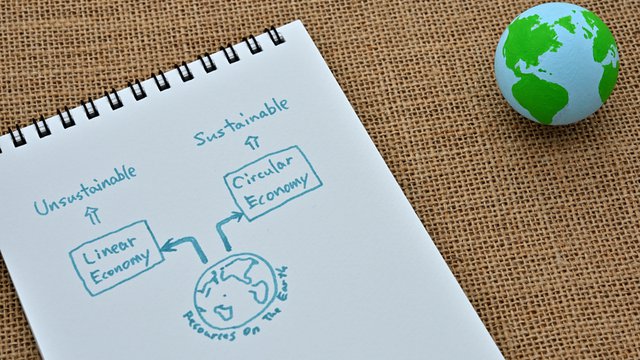

Although there are more environmentally sustainable alternatives, the idea of "buy, use, dispose" predominates in our society. Known as linear economics, you can study this traditional economic model in our Degree in Economics in Madrid.
The linear economy consists of producing different goods from raw materials that are subsequently consumed. Surplus products or materials are discarded, with no possibility of being reused.
Do you want to know more about the linear economy and learn about other more efficient and sustainable models that are currently being developed? We tell you this and more in this post!
Characteristics of the linear economy
Today, the linear economy is an economic model based on the extraction and exploitation of natural resources or raw materials to create different products. Its life cycle is usually very short, so it can generate a high volume of waste.
The main peculiarity of the linear economy is its ease of acquiring new resources at low costs.
The linear economy model is currently the most popular model among companies. The main reason for this has to do with one of the key objectives of microeconomics: to achieve financial expansion.
However, linear economics is subject to innumerable dangers. Among its most serious consequences is the environmental degradation resulting from the overconsumption of products.
Disadvantages of linear economics
Some of the disadvantages of this economy are:
- It does not recycle or reuse: once the product has been used, it does not go through the recycling process. It therefore encourages the purchase of new products rather than their repair and reuse.
- It does not prioritise renewable energies in production: it promotes the use of the cheapest resources, even if they are finite and polluting.
- It harms the environment: the production system of the linear economy does not consider the care of the environment and the damage this can cause to people.
Examples of linear economics
There are numerous examples that illustrate the situation of the linear economy today and explain its dangers for the environment. Here are a few:
- Disposable nappies: they are produced, sold, consumed and finally discarded. It is estimated that each baby uses an average of six thousand nappies in the first three years of life. It will take 450 years for each nappy to disappear from our environment.
- Plastic packaging: The list of products available in supermarkets that contain plastic packaging is almost endless. If you have the opportunity, it is advisable to buy products with cardboard or glass packaging and, of course, to recycle.
- Fast food: everything fast is designed to generate maximum consumption and is therefore part of the linear economy. This concept is about buying large quantities and paying less for it. However, the reality is that the life cycle of these products is very short, which increases the need to buy and consume them assiduously.
Differences between the linear economy and the circular economy
In recent years, the circular economy has become one of the environmental economic models that aims to combat the linear economy.
The fundamental pillars of the circular economy are efficiency, intelligent use of resources and moderation of consumption. Therefore, the circular economy focuses on generating value and preventing it from being wasted outside the system.
Some of the differences between the linear economy and the circular economy are as follows:
- Focus: the linear economy focuses on the production of goods and services. Circular economics is concerned with the creation of sustainable systems.
- Process: In the linear economy, products are generated, bought and discarded. In the circular economy, they are taken, processed and reused.
- Waste: In the linear economy, waste is a problem that ends up being destroyed. In the circular economy, the aim is to optimise it.
- Consumption: in the linear economy, consumption is rectilinear and desirable. In the circular economy, it is infinite and sustainable.
As you can see, the linear economy and the circular economy represent two very different approaches to production and consumption. In recent years, the world has become aware of the need to conserve natural resources and ensure a more prosperous future for generations to come.
As a result, more and more companies are adopting a circular economy system that allows them to reduce their environmental impact. This, in turn, allows them to generate new business opportunities that promote sustainable initiatives for our planet.
If you are interested in this field, the Master In Financial Management at Universidad Europea will also train you to face the challenges derived from this sector.
Article published on Aug. 21, 2023